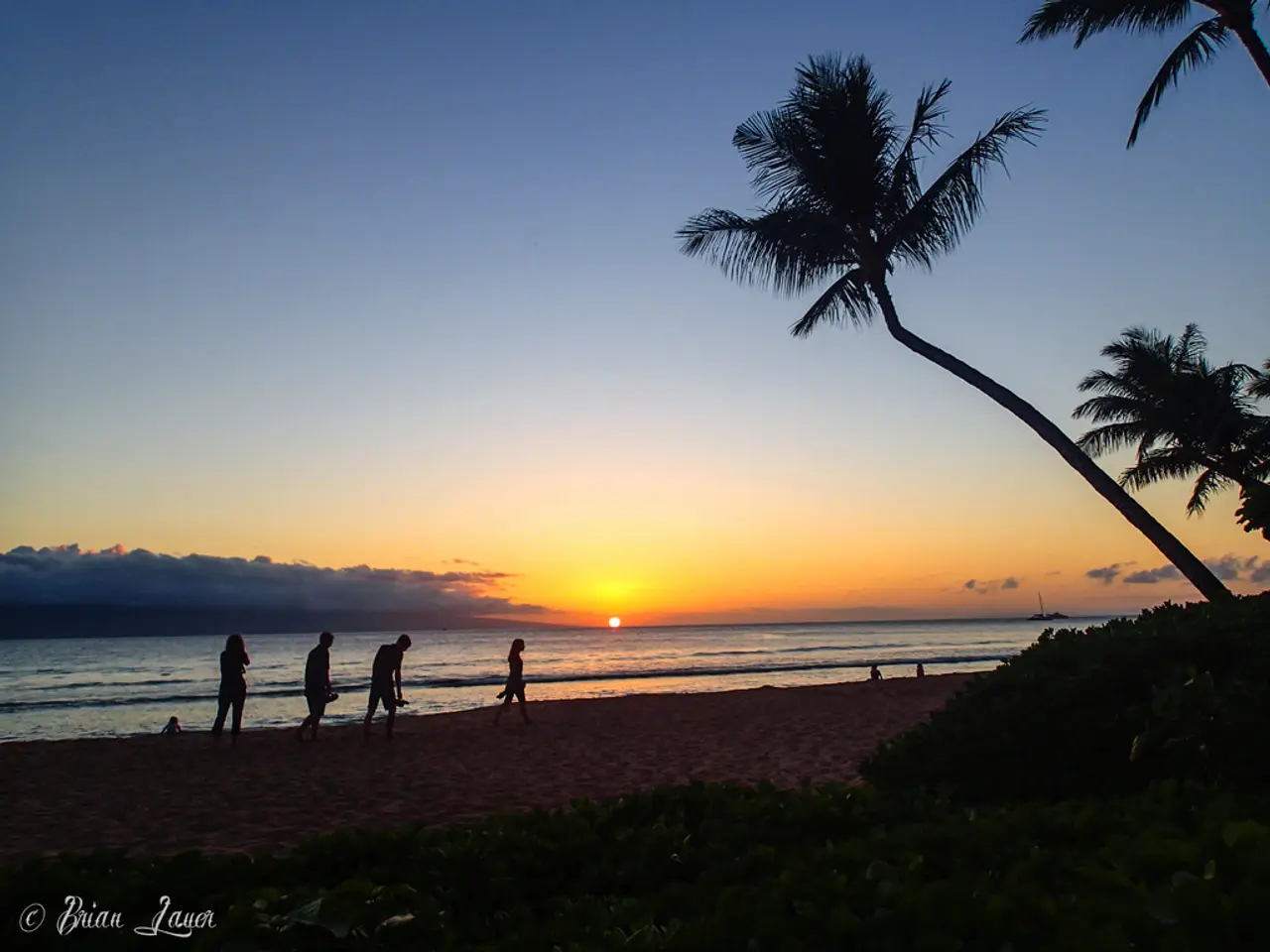Capturing Stunning Sunsets in Your Travels: Insider Tips for Photographers
Mastering Sunset Photography: A Guide for Smartphone Enthusiasts
In the realm of smartphone photography, capturing stunning sunset shots has never been easier. With the help of Pro modes, tripods, and apps like Moment, you can transform your iPhone or Samsung Galaxy into a powerful sunset photography tool. Here are some key techniques to help you master the challenging contrast between bright skies and shadowy landscapes.
Exposure Management
Expose for the sky: Since the sky at sunset is often much brighter than the landscape, start by metering or locking exposure on the sky to preserve its detail and avoid blowing out highlights. Then, brighten shadows in post-processing to bring out details in the landscape.
Using Graduated Neutral Density Filters
These semi-transparent filters darken only the sky portion in-camera, helping balance the bright sky against the darker foreground. You can rotate the filter to align with the horizon, but irregular horizons may complicate usage.
Exposure Blending
Take multiple shots at different exposures (one exposed for the sky and one for the shadows) and blend them in editing software to achieve a balanced image without blown highlights or crushed shadows.
Post-Processing
Tools like Camera Raw allow selectively darkening bright areas and brightening dark areas to improve tonal distribution, thus preserving contrast while revealing details in shadows. Boosting contrast and saturation slightly can revive colors in images that look flat or dull.
Timing and Light
Sunset (golden hour) offers softer lighting than midday, but very strong contrasts remain. Sometimes shooting slightly before or after golden hour can yield better tonal variety. Be mindful of uneven light and consider reflectors or fill flash if appropriate for nearer landscape elements.
Equipment
For phones, a pocket-sized Joby GorillaPod can also help stabilize the camera. Wide-angle lenses (16-35mm) capture expansive skies and are ideal for sunset and sunrise photography. Prioritize preserving highlight details to prevent loss of cloud or horizon colors turning pure white.
Composition
Composition determines how viewers feel about a work of art, and intentional framing choices can elevate twilight scenes. The rule of thirds can be used to create balanced and visually appealing compositions. Placing focal points (trees, buildings) at intersecting points using the camera's grid overlay feature can also enhance the visual impact of the image.
Tips for Enhancing Your Sunset Shots
- For flares, try a narrower aperture (f/8-f/16) and position the sun near the edge of your frame.
- Experiment with underexposing to create silhouettes against fiery skies or overexposing slightly to reveal hidden textures in foreground elements.
- Enable highlight alerts to catch blown-out areas in the image.
- Shoot bracketed sequences (3-5 shots at varying exposures) for better chances of capturing the ideal exposure.
- Enabling the camera's 2-second timer can reduce shake when taking photos without a tripod.
- Adjusting the white balance setting to around 6000-8000K can enhance warm tones without oversaturation.
- Using a bean bag, rock, or steady surface can help stabilize a camera without a tripod.
By combining these techniques, you can effectively master the challenging contrast between bright skies and shadowy landscapes in sunset photography. Happy shooting!
Wisdom gained from mastering sunset photography can greatly enhance one's lifestyle, especially for mobile photography enthusiasts who travel frequently. To fully capture the splendor of a sunset, it's essential to leverage techniques like exposure management, use of graduated neutral density filters, and post-processing tools for optimal results.




